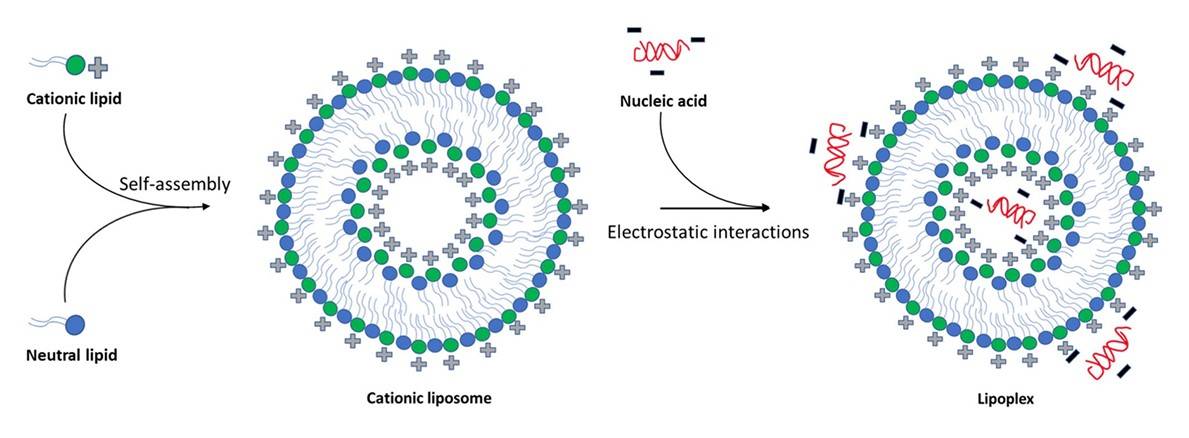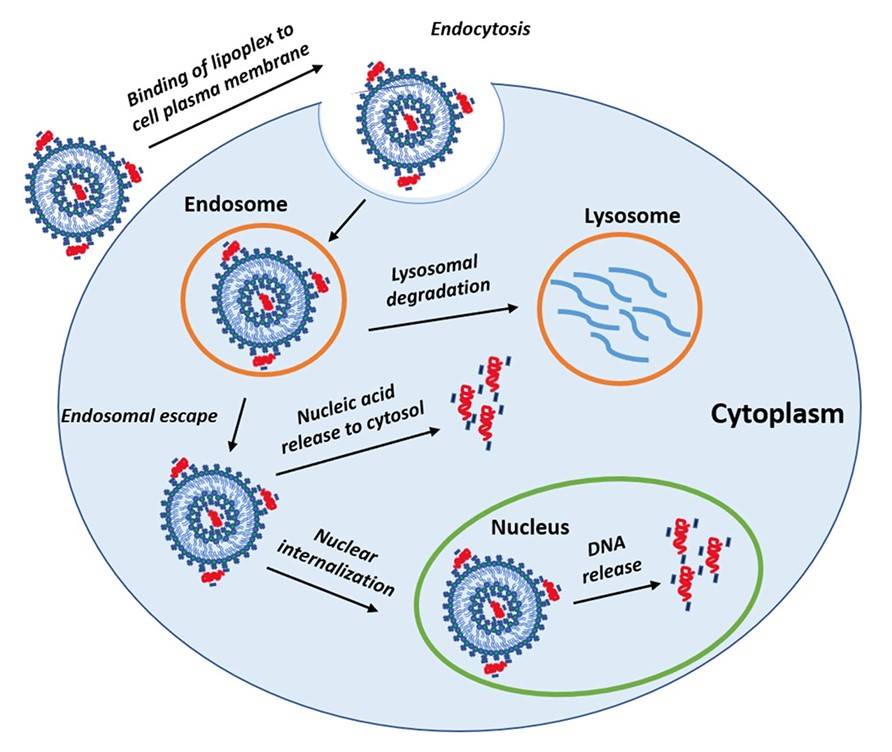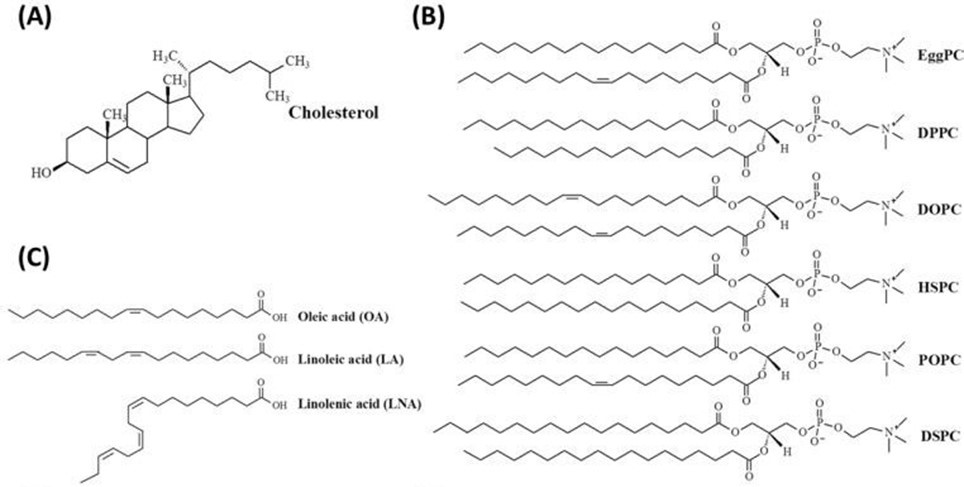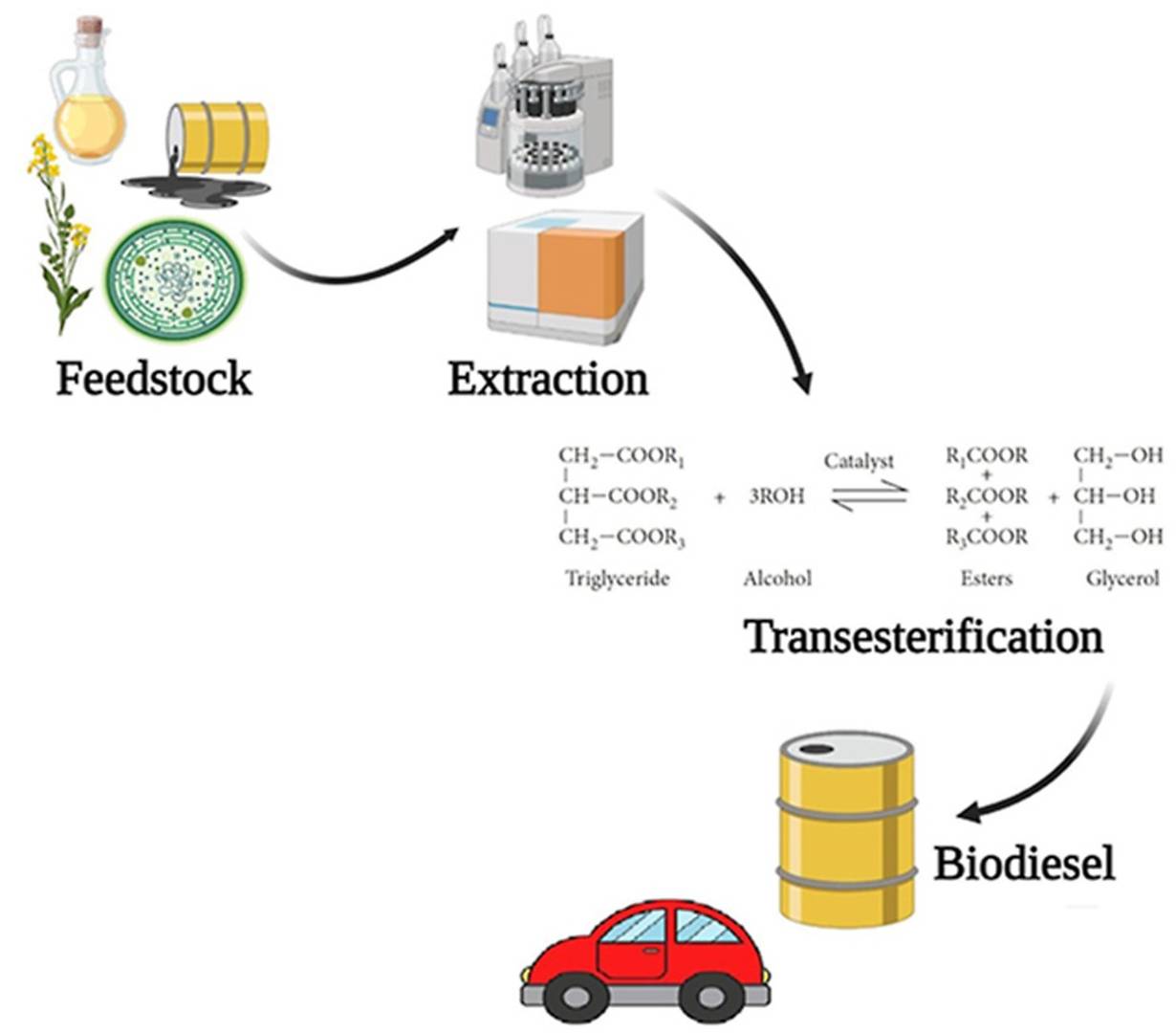Our Products Cannot Be Used As Medicines Directly For Personal Use.


Welcome! For price inquiries, please feel free to contact us through the form on the left side. We will get back to you as soon as possible.
Cationic & Neutral Lipids
Lipids are fundamental biomolecules that play a central role in cellular structure, signaling, and energy storage. Within the diverse family of lipids, cationic lipids and neutral lipids are two distinct categories with unique properties and functions. Cationic lipids, positively charged molecules under physiological conditions, are essential in gene delivery and nanotechnology. In contrast, neutral lipids, devoid of charge, serve as essential components in energy storage, membrane formation, and lipid droplet dynamics.
At the forefront of lipid innovation, Creative Enzymes provides a meticulously curated selection of cationic lipids and neutral lipids designed to meet the needs of modern research, therapeutic development, and industrial applications.
Cationic Lipids: Structure and Functional Attributes
Cationic lipids are amphiphilic molecules consisting of a positively charged hydrophilic head group and a hydrophobic tail, typically derived from fatty acid chains. Their primary characteristic—a net positive charge—enables them to interact electrostatically with negatively charged biomolecules, such as nucleic acids and cellular membranes.
Structural Features
Cationic lipids typically contain a quaternary ammonium group, imidazolium, or other protonated functional head. These groups impart a positive charge that facilitates their interaction with negatively charged DNA, RNA, and proteins. The hydrophobic tails, often consisting of saturated or unsaturated alkyl chains, anchor the lipid within lipid bilayers or micellar structures. The unique duality of hydrophilic and hydrophobic regions allows cationic lipids to self-assemble into vesicles, lipoplexes or lipid nanoparticles.
 Figure 1: Chemical structure of famous cationic lipids used in DNA delivery. (Pitard et al., 2017)
Figure 1: Chemical structure of famous cationic lipids used in DNA delivery. (Pitard et al., 2017)
Mechanism of Action
The electrostatic interaction between cationic lipids and nucleic acids forms lipoplexes—stable complexes that protect genetic material during delivery. Once the lipoplex encounters a cell membrane, it undergoes endocytosis. The lipid-nucleic acid complex disrupts endosomal membranes through fusogenic interactions, allowing the genetic material to escape into the cytoplasm for functional activity. This mechanism underlies the use of cationic lipids in gene therapy and RNA delivery systems.
 Figure 2: Diagrammatic representation of synthesis, preparation and formation of lipoplex. (El-Zahaby et al., 2024)
Figure 2: Diagrammatic representation of synthesis, preparation and formation of lipoplex. (El-Zahaby et al., 2024)
Applications of Cationic Lipids
- Gene Delivery and Therapeutics: Cationic lipids are indispensable in non-viral gene delivery systems. Lipid-based nanoparticles, such as those containing DOTAP (1,2-dioleoyl-3-trimethylammonium-propane) (fluorescent DOTAP) or DODMA (1,2-dioleoyl-3-dimethylammonium-propane), facilitate the safe and efficient delivery of DNA, siRNA, and mRNA. In recent years, cationic lipid nanoparticles (LNPs) have gained prominence as vehicles for mRNA vaccines, such as those developed against SARS-CoV-2, demonstrating their clinical utility.
 Figure 3: Uptake and cellular inter nalization of a lipoplex. (El-Zahaby et al., 2024)
Figure 3: Uptake and cellular inter nalization of a lipoplex. (El-Zahaby et al., 2024)
- Drug Delivery Systems: Beyond nucleic acids, cationic lipids serve as delivery vehicles for small-molecule drugs, peptides, and proteins. Their ability to form liposomes or nanoparticles enables controlled release and targeted delivery, reducing off-target effects. In cancer therapeutics, cationic lipid carriers deliver chemotherapeutic agents selectively to tumor cells, improving therapeutic efficacy.
- Antimicrobial Applications: Cationic lipids exhibit intrinsic antimicrobial properties by disrupting microbial membranes through electrostatic interactions. Positively charged lipid analogs interact with negatively charged bacterial membranes, leading to structural instability and cell lysis. These antimicrobial lipid formulations are explored as alternatives to traditional antibiotics.
- Nanotechnology and Biosensors: In nanotechnology, cationic lipids are used to develop lipid-based nanocarriers and biosensors. Their tunable electrostatic properties enable the design of functional nanomaterials for biosensing, imaging and diagnostics. Cationic lipid-based platforms hold promise for the detection of pathogens, toxins, and biomolecules with high sensitivity.
Neutral Lipids: Structure and Functional Attributes
Neutral lipids, characterized by their non-polar nature and lack of net charge, include triglycerides, cholesterol esters, and certain phospholipid derivatives. Unlike cationic lipids, neutral lipids do not interact electrostatically with biomolecules. Instead, their hydrophobicity causes them to aggregate into lipid droplets or to incorporate into membrane structures.
Structural Features
Neutral lipids consist primarily of glycerol backbones esterified with fatty acids to form triacylglycerols (TAGs). Cholesterol esters, another major class, result from the esterification of the hydroxyl group of cholesterol with long-chain fatty acids. Their hydrophobic nature renders them insoluble in aqueous environments, leading to their compartmentalization in lipid droplets.
 Figure 4: Chemical structures of neutral lipids. (A) Cholesterol, (B) various PCs, (C) unsaturated fatty acids (OA, LA and LNA). (Bai et al., 2019)
Figure 4: Chemical structures of neutral lipids. (A) Cholesterol, (B) various PCs, (C) unsaturated fatty acids (OA, LA and LNA). (Bai et al., 2019)
Functional Roles
Neutral lipids are central to energy homeostasis. TAGs serve as primary energy storage molecules that are mobilized during fasting or increased energy demands. Cholesterol esters regulate cholesterol availability and play a critical role in membrane fluidity, steroidogenesis and lipid transport.
Applications of Neutral Lipids
- Energy Storage and Metabolic Research: Neutral lipids, especially triacylglycerols (TAGs), are critical for energy metabolism. Lipid droplets, where TAGs are stored, have been extensively studied in metabolic disorders such as obesity, diabetes, and non-alcoholic fatty liver disease (NAFLD). Researchers are studying lipid droplet dynamics to understand how neutral lipid accumulation contributes to disease progression.
- Food and Nutraceutical Industries: Neutral lipids, including vegetable oils, omega-3 fatty acids, and plant-based triglycerides, are extensively used in the food industry for nutritional supplementation and product formulation. Omega-3-rich neutral lipids, such as docosahexaenoic acid (DHA), offer cardiovascular and cognitive health benefits.
- Cosmetics and Personal Care: Neutral lipids such as jojoba oil and squalene are integral to skin care formulations for their emollient and moisturizing properties. Their biocompatibility and ability to restore skin barrier function make them ideal for dermatological products targeting hydration and anti-aging.
- Drug Delivery Carriers: Neutral lipids, particularly glycerolipids and cholesterol derivatives, form the basis of liposomes and lipid nanoparticles used in drug delivery systems. Their ability to encapsulate hydrophobic drugs enhances bioavailability and stability, addressing challenges in therapeutic delivery.
- Lipidomics and Disease Biomarkers: Neutral lipid analysis provides insight into lipid metabolism and disease biomarkers. Changes in TAG levels or cholesterol ester content often serve as indicators of metabolic and cardiovascular disease, aiding in early diagnosis and therapeutic monitoring.
- Lipid-Based Biofuels: Neutral lipids are valuable feedstocks for biofuel production. Triacylglycerol-rich microalgae are being cultivated as renewable sources of biodiesel. Their high lipid content and rapid growth make them promising candidates for sustainable energy solutions.
 Figure 5: Neutral lipids are used for biofuel production (Adapted from Pandit et al., 2023)
Figure 5: Neutral lipids are used for biofuel production (Adapted from Pandit et al., 2023)
Cationic vs. Neutral Lipids: A Comparative Perspective
While cationic and neutral lipids differ fundamentally in charge, their applications intersect in biomedical and industrial fields. Cationic lipids excel in gene delivery and nanotechnology due to their electrostatic interactions, whereas neutral lipids dominate energy storage, metabolism, and industrial lipid applications. Their synergy is evident in lipid-based nanoparticles, where neutral lipids stabilize cationic lipid formulations for therapeutic delivery.
Both types of lipids are essential in disease research. Cationic lipids enable precise genetic intervention, such as siRNA delivery for cancer therapy, while neutral lipids provide critical data on metabolic imbalances and lipid-associated diseases. This complementary relationship underscores their collective importance in driving scientific innovation and industrial solutions.
At Creative Enzymes, our cationic and neutral lipids are backed by rigorous quality control, exceptional purity standards, and scalable supply chains to support your research and commercial needs. Whether advancing therapeutic discoveries, unlocking lipidomics insights, or scaling industrial innovations, our lipids enable your breakthroughs. Explore our product portfolio or contact us for inquiries, customized solutions, or technical support.
References:
- Bai Z, Wei J, Yu C, et al. Non-viral nanocarriers for intracellular delivery of microRNA therapeutics. J Mater Chem B. 2019;7(8):1209-1225.
- El-Zahaby SA, Kaur L, Sharma A, et al. Lipoplexes' structure, preparation, and role in managing different diseases. AAPS PharmSciTech. 2024;25(5):131.
- Pandit C, Banerjee S, Pandit S, et al. Recent advances and challenges in the utilization of nanomaterials in transesterification for biodiesel production. Heliyon. 2023;9(4):e15475.
- Pitard B, Habrant D. Supramolecular gene transfection agents. In: Comprehensive Supramolecular Chemistry II. Elsevier; 2017:365-389. doi:10.1016/B978-0-12-409547-2.12563-6
| Catalog | Product Name | EC No. | CAS No. | Source | Price |
|---|---|---|---|---|---|
| PCNZ-021 | C8 PEG5000 Ceramide | 212116-76-2 | Inquiry | ||
| PCNZ-020 | C16 PEG5000 Ceramide | 212116-78-4 | Inquiry | ||
| PCNZ-019 | C8 PEG750 Ceramide | 212116-76-2 | Inquiry | ||
| PCNZ-018 | C16 PEG750 Ceramide | 212116-78-4 | Inquiry | ||
| PCNZ-017 | DSPE-PEG(5000) Azide | Inquiry | |||
| PCNZ-016 | DSPE-PEG(2000) Azide | Inquiry | |||
| PCNZ-015 | DSPE-PEG(2000)-DBCO | Inquiry | |||
| PCNZ-014 | DSPE-PEG(2000) Succinyl | Inquiry | |||
| PCNZ-013 | DSPE-PEG(2000) Cyanur | 1246304-74-4 | Inquiry | ||
| PCNZ-012 | DSPE-PEG(5000) Folate | 1236288-25-7 | Inquiry | ||
| PCNZ-011 | DSPE-PEG(2000) Folate | 1236288-25-7 | Inquiry | ||
| PCNZ-010 | DSPE-PEG(2000) Carboxylic Acid | 474922-20-8 | Inquiry | ||
| PCNZ-009 | DSPE-PEG(2000) PDP | 474922-24-2 | Inquiry | ||
| PCNZ-008 | DSPE-PEG(2000) Amine | 474922-26-4 | Inquiry | ||
| PCNZ-007 | DSPE-PEG(2000) Biotin | 385437-57-0 | Inquiry | ||
| PCNZ-006 | DSPE-PEG(2000)-TMS | Inquiry | |||
| PCNZ-005 | DSPE-PEG(5000) DBCO | Inquiry | |||
| PCNZ-004 | DSPE-PEG(5000) Maleimide | Inquiry | |||
| PCNZ-003 | DSPE-PEG(2000) Maleimide | 474922-22-0 | Inquiry |